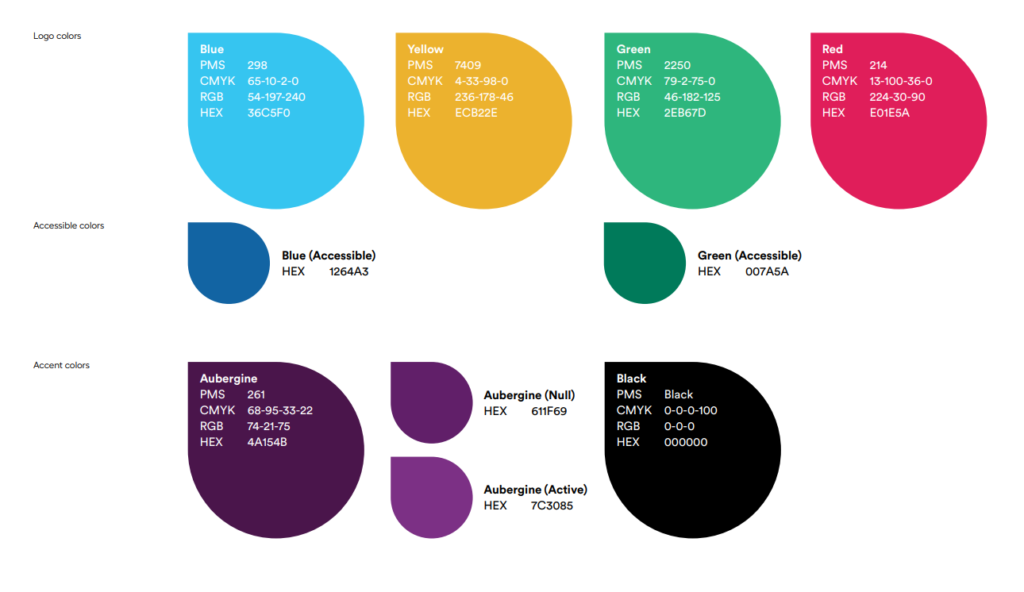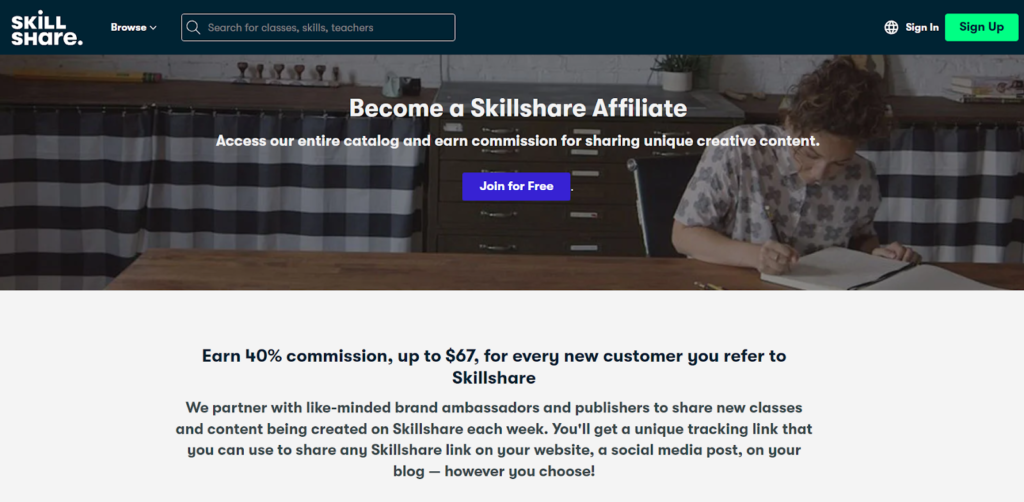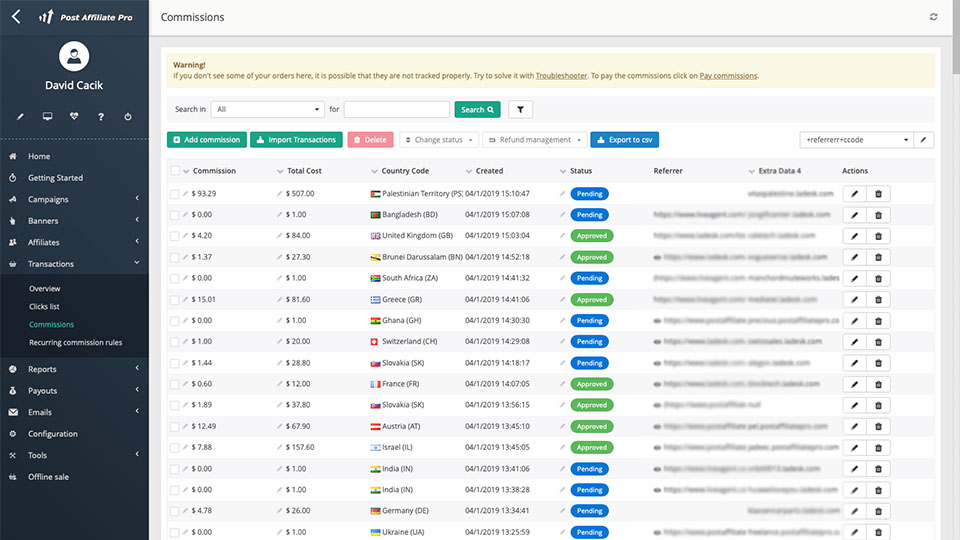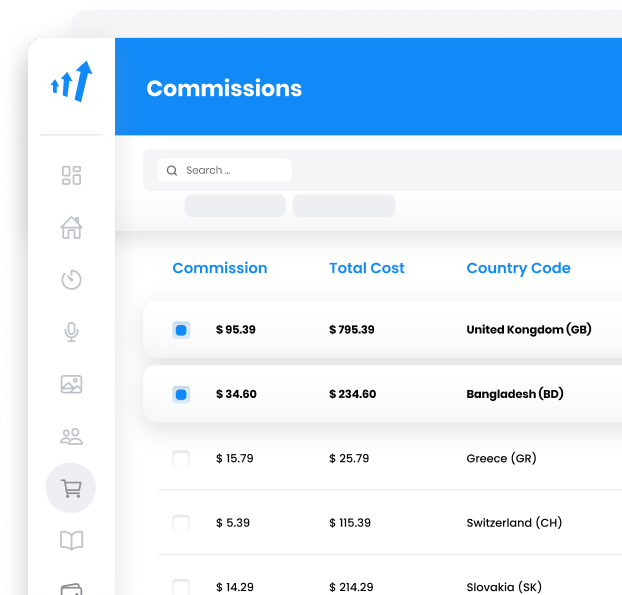Online businesses have many ways to cut through the noise and gain a loyal customer base. One non-pushy way to do it is via affiliate marketing.
Why? When brands self-promote, new audiences may be skeptical. On the other hand, affiliates and niche influencers have gained the trust of their audience.
So, to increase conversions and ROI and, more importantly — grow your brand, you need to partner with affiliates. But this can’t be a shot in the dark. You need a creative and methodical approach to develop your brand.
In today’s article, we’ll teach you how to build a brand strategy and share how to use affiliate marketing strategies that align with your core values and make a lasting impression on your target market.
7 Effective brand development strategies
Looking for the ultimate answer to how to build a brand strategy? Look no further. Below, we delve into seven effective brand development strategies that will help you create a strong and memorable brand.
1. Establishing a strong brand identity
A solid brand identity gives your brand building a clear direction. It inspires customer loyalty, attracts new customers, and represents your story as a business.
Start by defining your brand’s core values and mission, including:
- Company’s purpose
- Problems you’re solving
- Future aspirations
Identify what differentiates you from your competitors. Then, define your unique brand voice to keep your brand development strategies consistent and gain a competitive advantage. Making it personable and recognizable also boosts your affiliate program’s efficacy.
Align your existing content with your brand’s image. Conduct “we are this, not that” exercises. For example, “We’re relatable, but not sappy.”
Identify three or four words that best describe your values and voice. Create a chart defining what those words mean to you and the do’s and don’ts of integrating each while building brand strategy.
Humans connect over shared experiences and stories. So, to grab the audience’s attention, create a compelling brand narrative. Here are the qualities of an effective brand story:
- Authentic
- Detailed and easy to comprehend
- Consistent across channels
- Customer-centric
- Follows a definite framework
- Aligns with your brand’s personality
Design a visual identity with a memorable logo, color scheme, tagline, imagery, and typography. Each of these elements should come together seamlessly and communicate to your audience who you are and what makes you unique.

Nike’s swoosh, one of the most recognizable logos in the world, is the perfect example here. This iconic athletic brand aims to make fitness inclusive and approachable for the common mass. Staying true to this core value, Nike’s logo is simple and represents fluidity, motion, and speed. The tagline “Just Do It” invokes motivation and confidence.
2. Conducting market research and understanding your target audience
Creating a brand aims to appeal to the audience, make them remember you, and position your product in the right space. Companies must conduct thorough market research and create audience personas before building a brand strategy. This enables better brand positioning, targets the ideal audience, and lets you run successful affiliate campaigns.
Collect and analyze first-party and third-party customer data to identify target audience demographics and psychographics. Create ICPs based on:
- Age
- Gender
- Location
- Religion and ethnicities
- Hobbies
- Preferences
- Professions
Conduct competitor analysis to see what customer segments your rival brands are targeting, how the audience reacts to their branding, and what you can do to differentiate your brand. This will detect gaps in your industry and let you tap into them to develop a brand strategy accordingly.
Run customer surveys to collect feedback on your branding. Use social listening to monitor customer response and apply your findings to refine your brand positioning.
Chris Masantos, founder and CEO of Petlab Co., says,
“Our Customer experience team regularly reaches out to the customers and runs surveys, finding out important information from the source itself about their experience with the company. This helps us not only detect issues customers often face but also help them know specific pain points to create a better brand.”
3. Consistent brand messaging across channels
Consistency is everything in brand development strategies. It leads to better brand recognition and associates positive emotions with your business. So, ensure a uniform brand narrative across all channels.
Maintaining consistent brand messaging across all departments becomes difficult as you grow your business. To counter that, create a brand style guide for unified communication.
This way, every stakeholder will know precisely how to present your brand to the audience. A brand style guide directs the design for all your business assets and resources, from office spaces to content. Specifying brand element usage also helps in finding and partnering with affiliates. Consider using efficient affiliate marketing software for best results.
Here is how you can design a brand style guide:
- Communicate your mission and vision clearly across all departments.
- Outline your brand’s core color palette with hex codes and RGB values.
- Include guidelines for logo positioning to ensure consistent usage.
- Specify your typography system and hierarchy, including what font sizes to use.
- Define proper formatting rules.
- Define your brand voice in simple and cohesive terms.
- Include guidelines for imagery.
- Emphasize the don’ts.
For example, Slack developed a detailed brand guideline handbook for consistent messaging. The guidelines define how the brand’s logo comprises an octothorp (#) and a logotype set in Hellix Bold. It also directs the teams to always use the logo files provided in the pack.

Slack specifies its color palette, detailing the primary brand color, hues, and background variations.
Organize your marketing assets and assign relevant resources to your teams to streamline the design process and simplify collaboration. This ensures seamless team communication and maintains consistency across online and offline channels.
Tailor brand messaging to different platforms and audiences while staying true to your brand voice. Analyze your platform’s customer segments and audience base to curate and repurpose your branding content.
4. Building brand trust and credibility
Branding is not all logos and color themes.
While building brand strategy, gaining your target audience’s trust should be your primary focus. Developing brand credibility increases the market’s receptiveness, boosts loyalty, generates more leads and drives customer advocacy.
There is no better catalyst for your brand’s reliability than excellent customer service and support. Make your website mobile-friendly and easy to use. Your product catalog should offer easy navigation and proper product details with relevant filters and categories.
Collect customer data to personalize your brand experience and provide relevant offers and recommendations. Another useful idea is to ensure your customers can add and remove cart items easily. Partner with reliable gateways for a smooth and simple checkout process. Use chatbots and 24×7 customer support for quick resolutions.
Customers trust authentic reviews more than professional advertisements. So, include social proof on your website and marketing materials. Showcase testimonials from happy clients to boost brand credibility.
Establish thought leadership and expertise in your industry by marketing value-driven and informative content. This will subtly show your capabilities of providing effective solutions and boost the audience’s trust in your brand.
5. Embracing affiliate collaborations
Besides driving direct sales, affiliate marketing promotes your brand to a wider audience, increasing traffic and awareness. As you only have to pay for the traffic you receive and sales you make, it is a low-cost, low-risk, and flexible method of brand development.
Identify influencers whose media image aligns with your brand identity. Draw up a collaboration contract and assign them affiliate links to promote on their channels. You can also have affiliate partnerships with loyal consumers, enhancing customer advocacy.

For example, Skillshare has an affiliate program where they partner with publishers and brand ambassadors to promote the brand’s affiliate links.
Collaborate with your affiliate partners to create trendy campaigns on time. Then, you can promote them on your social media channels for better engagement and reach.
Measure the impact of affiliate partnerships by tracking KPIs like click traffic, new customer percentage, conversion rate for each click, average order value, among others. It helps improve your brand development strategies and drive better results.
Use scalable affiliate tracking software for accurate insights. Using such efficient tools, you can monitor payment processors, split the commissions, and track campaigns hassle-free.
With Post Affiliate Pro, advanced tracking mechanisms are employed to ensure the utmost accuracy in results. The platform prioritizes using the strongest tracking methods, resorting to alternative methods only when the primary ones aren’t applicable for a specific visitor. It systematically evaluates tracking methods in the following order:
- Browser cookie tracking (both first-party and third-party cookies)
- HTML5 cookie tracking
- IP address tracking
- Combining User Agent with IP address tracking.
This thorough approach ensures consistent and reliable tracking of affiliate activities.

Post Affiliate Pro also shows you a clear picture of your affiliates’ overall performance, giving you the customization abilities to reward affiliate’s accordingly and allowing you to modify and enhance your campaigns all from a single dashboard.
6. Effective brand communication and storytelling
Communicate who you are authentically to create a lasting impression. A creative marketing piece may not engage your audience, but a compelling brand narrative will make you relatable and attract customers.
Powerful storytelling builds connections with your audience. It gives them a reason to root for your success and become an active part of it.
Promote an inspiring founder’s story to communicate the roadblocks your business had to overcome. It humanizes your brand and links common experiences to your identity.
Use customer success stories to show the real-life impact your brand has made. You can also share product and service stories and portray how your services can solve specific problems.
For example, the eyewear retailer brand Warby Parker promotes the story of how the founder lost his glasses on a trip and couldn’t afford another pair. They communicated how that was the driving force behind its mission “to inspire and impact the world with vision, purpose, and style.” The brand also contributed eyewear to individuals in need via nonprofit organizations, reinforcing the brand’s mission.
Create a content marketing strategy based on your brand’s voice and storytelling framework. You can craft blogs, infographics, and videos to drive your stories to different target segments. Utilizing various email marketing ideas can take the relationships with all your subscribers to the next level.
Leverage the reach of social media platforms for brand communication. If you are a B2B brand, platforms like LinkedIn and Twitter would be perfect for you. For B2C brands, Instagram, Facebook, TikTok, and YouTube are preferable.
Monitor your audience and customers on social media and gather user-generated content. Reports show that UGC has 2.4 times more authenticity from the customer’s perspective than any other branded content. So, using content posted by loyal customers will amplify your brand message and boost relatability.

For easy UGC tracking, you can also start a dedicated hashtag. For example, Moxy Hotels urged customers to use #atthemoxy while posting pictures and videos at their properties. The hashtag generated 71.8K posts to date.
Leveraging affiliates can also be an excellent boost for your brand development strategies. It drives more visitors to your website and amplifies your reach, boosting brand visibility.
7. Evolving and adapting your brand
To keep your competitive edge in an ever-evolving market, develop a brand strategy that’s flexible. This lets you quickly adapt to evolving customer preferences and keeps your brand relevant.
Constantly monitor industry trends and customer preferences.
Use AI-powered analytics tools to gain actionable insights into your market positioning. Leveraging machine learning within these tools can further refine predictions and automate data-driven decision-making, ensuring your strategy remains on the cutting edge. See how you can change your strategy without losing your brand voice. Running competitor analysis here can give you some inspiration.
Taking calculated risks is crucial in business to stay ahead of the competition. However, research thoroughly and gather enough data to ensure positive outcomes before changing brand aspects.
Netflix’s evolution from a DVD provider to one of the most popular OTT platforms is a good example of smart brand adaptability. In 2007, the entertainment brand took a calculated risk and switched from being a DVD rental store to an online streaming service provider. While no one expected them to compete with cable TV, Netflix changed how the world views entertainment.
How affiliate marketing can help with brand development
Affiliate marketing is a powerful strategy that allows brands to expand their reach, tap into new audiences, and build a strong reputation. By collaborating with trusted influencers and partners, companies can leverage their established audience and credibility to promote their products or services, thus enhancing brand visibility and trustworthiness.
Take, for instance, a startup eco-friendly skincare brand. By partnering with beauty influencers or bloggers who already have an audience interested in sustainable beauty, the brand can introduce its products to potential customers in a context they trust. This not only boosts sales but places the brand in front of consumers who might not have discovered it otherwise, thereby aiding in brand development.
When it comes to streamlining and optimizing affiliate marketing efforts, Post Affiliate Pro offers a myriad of features, including:
- Real-time tracking: Track every click, sale, and action in real-time to gauge the effectiveness of affiliate campaigns.
- Customizable commission structures: Create and manage various commission structures to incentivize affiliates effectively.
- Reliable payment processors integration: Ensure timely and accurate payments to affiliates through seamless integrations with popular payment gateways.
- Advanced link tracking: Use DirectLink tracking or URL parameters to make links more user-friendly and less obvious, enhancing the user experience.
- Detailed reporting: Access insightful reports that shed light on affiliate performance, helping in decision-making and strategy optimization.
By harnessing the potential of affiliate marketing with tools like Post Affiliate Pro, brands can enjoy accelerated growth, enhanced recognition, and robust brand development.
Besides increasing conversions, affiliate marketing offers an array of brand development benefits. These include:
- Brand exposure: By leveraging brand ambassadors and influencers, affiliate marketing spreads word-of-mouth and enhances brand exposure.
- More qualified traffic: Affiliates create content that drives awareness around your product and brings high-quality leads to your website.
- Larger customer base: Affiliate marketing boosts brand visibility, widening reach and extending your customer base.
- Trust and credibility: When your affiliate partners vouch for your products and services, it acts as social proof and builds credibility.
- Performance-based marketing: Affiliate partnerships are performance-based marketing that drives fast results and quick conversions.

Conclusion
Creating the perfect brand takes time. You need to keep every step aligned with each other to drive a consistent narrative. Use storytelling to grip the audience and prove your brand value through social proof and effective content marketing.
While you develop a brand strategy for your company, incorporate adaptability. Make it a continuous process to detect market changes and pivot at the right time.
Lastly, use affiliate marketing methods to create awareness and drive more sales. Find and leverage a reputable affiliate marketing software like Post Affiliate Pro and use their free trial to your advantage. Partner with relevant influencers and loyal customers to spread word of mouth. With data-driven decisions, a creative sight, and regular monitoring, you can create a memorable and sustainable brand and gain a global reputation.
Share this article
Affiliate marketing email templates
Discover expertly crafted email templates for affiliate marketing with Post Affiliate Pro. Enhance your communication by motivating, acknowledging, and engaging affiliates effectively. From terms and conditions to product launches, these templates ensure clear and consistent messaging to boost your affiliate program's success. Visit now to streamline your affiliate communication!
How To Find Affiliates to Sell Your Products
Discover over 10 successful strategies for finding high-quality affiliates in 2024 to boost your product sales. Learn to leverage influencers, join affiliate networks, and enhance your reach through SEO and social media. Maximize revenue with transparency and ongoing monitoring in your affiliate marketing program.









